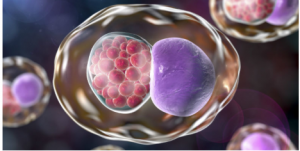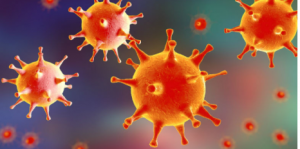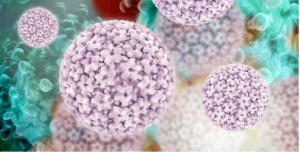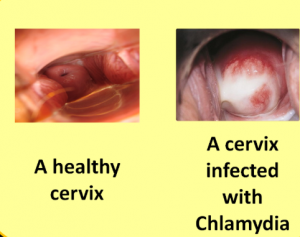
Table of Contents
What are Sexually Transmitted Infections (STI)?
- Sexually Transmitted Infections (STIs) are the infections which are generally acquired by sexual contact.
- Sexually Transmitted Infections (STIs) specifically transmit from one person to another during unprotected sex or close sexual contact with the person who already has an STI.
- Infection are passed from one person to another during vaginal, anal or oral sex.
Global Facts About Sexually Transmitted Infections:
According to WHO:
- More than 1 million STIs are acquired every day.
- Every year, there are estimated 376 million new infections with one of four STIs:
- Chlamydia (131 million),
- Gonorrhea (78 million),
- Syphilis (5.6 million) and
- Trichomoniasis (143 million).
- More than 500 million people are living with genital HSV (herpes) infection.
- At any point in time, more than 290 million females can have an HPV infection, one of the most common STIs.
Different Types of STIs:
The different Sexually Transmitted Infections. They are as follows:
1. CHLAMYDIA:

- Caused by bacteria called Chlamydia trachomatis.
- Passed through unprotected sex along with infected semen and vaginal fluids.
- Pregnant women with chlamydia can pass the infection to an unborn baby.
- Infected with chlamydia increases the possibility of receiving HIV as the infections because sores or lesions that helps HIV to enter in the body
Symptoms:
- Pain during sexual intercourse
- Pain when urinating
- Abdominal pain with fever
- Pelvic inflammatory disease
- Chlamydia symptoms in men
- Pain and swelling around the testicles
- Bladder infection
- Penile discharge (pus, watery, or milky discharge)
- Urethritis
Preventive measures:
- Safe sex practice
- Use of latex condom or female polyurethane condom
- Regular screening test
- Avoid multiple sex partners
2. GENITAL HERPES:

- Caused by the Herpes Simplex Virus (HSV)
- There are basically two types of HSV:
- HSV-1: transmitted by oral-to-oral contacts resulting oral herpes i.e. infections around the mouth area and inside it.
- HSV-2: transmitted through sexual contact with the infected sexual partner and it is lifelong and incurable
Symptoms of Herpes
- Asymptomatic during the first phase of infection and can take months or years to develop.
- If symptoms are seen the onset of the disease, they usually develop in 4-7 days.
- Symptoms are usually more severe the first time and lesser during re-occurring infections.
- Pain around genitals
- Fever
- Discomfort
- Trouble while urinating due to sores and swelling of the urethra
- Blisters and ulcers on the cervix (lower part of the womb) in women
- Small blisters, open sores around genitals, anus (bottom), thighs and buttocks
- Even though symptoms can disappear naturally, the virus stays dormant (inactive) in the body and symptoms may come back – this is called a recurrent outbreak.
Preventive Measures
- Awareness of STIs in red light areas.
- Infected person partners should be made aware of herpes
- Avoiding sexual contact after the symptoms start to appear in the body.
- Counseling to both infected person and their sexual partners about effective management of genital herpes.
- Physical and mental support to the infected person by their partners and families.
3. GENITAL WARTS

Caused by Human Papilloma Virus (HPV)/ Genital HPV.
Symptoms of Genital warts
- Whitish bumps presence on genital.
- Bleeding while intercourse
- Itching and discomfort around the genital area
- Genital wart complications may include cervical cancer and problems during pregnancy among women.
Preventive Measures
- Vaccination known as Gardasil protects against four strains of HPV that cause cancer and used to prevent genital warts.
- Safe sex practice
- Maintain hygiene and sanitation in private parts.
- Avoiding sexual contact with an infected partner.
- Routine checkups
- Counseling to the infected person and their partners about effective management of genital warts.
4. GONORRHEA

Caused by bacteria known as Neisseria gonorrhea or gonococcus
Symptoms of Gonorrhea
- In many cases, gonorrhea infections are asymptomatic but when they appear, it can affect multiple sites in the body.
In men:
- Painful urination
- Pus-like discharge from the tip of the penis
- Pain or swelling in one testicle
In women:
- Vaginal bleeding between periods, such as after vaginal intercourse
- Painful intercourse
- Abdominal or pelvic pain
- Untreated gonorrhea can lead to various complications in men and women such as Infertility, infection to other parts of the body, high risk of HIV/ AIDS, and complications in babies like infections, blindness, and sores on the scalp.
Preventive Measures
- Monogamous sexual partner
- Safe sex practice
- Use of condom during vaginal, oral, or anal sexual intercourse
- Regular gonorrhea screening test
We Don’t Get STI From?
Preventive Measures for Sexually Transmitted Infections:
- Provide STI services separately in health centers
- Screening services for screening
- Use latex condom and safe sex practices.
- Avoid sharing personal care items with an infected person.
- Follow universal blood precautions and safety
WHO Response To Prevent And Treat STIs:
WHO response in different countries to prevent and treat STIs are:
1. Scaling up effective STI services including:
- STI case management & counselling
- Testing and treatment of syphilis, especially for pregnant women
- Vaccination for Hepatitis B and HPV
- Screening (STI) among populations at increased risk
2. Promoting strategies to enhance STI prevention impact including:
- Integrating STI services in health system
- Promoting sexual health
- Assessing the burden of STIs
- Monitoring and response to STI antimicrobial resistance
3. Supporting the development of new technologies for STI prevention:
- Point-of-care diagnostic test for STIs
- Additional drugs for gonorrhea
- STI vaccines and other new biomedical interventions.
References and For More Information:
https://www.who.int/news-room/fact-sheets/detail/sexually-transmitted-infections-(stis)
https://www.avert.org/sex-stis/sexually-transmitted-infections
https://www.avert.org/sex-stis/sexually-transmitted-infections/chlamydia
https://www.avert.org/sex-stis/sexually-transmitted-infections/herpes
https://www.avert.org/sex-stis/sexually-transmitted-infections/genital-warts-hpv
https://www.avert.org/sex-stis/sexually-transmitted-infections/gonorrhoea
https://www.uspharmacist.com/article/prevention-and-management-of-genital-herpes
https://www.plannedparenthood.org/learn/stds-hiv-safer-sex/herpes/how-is-herpes-prevented
https://www.webmd.com/sexual-conditions/guide/chlamydia#1
https://www.webmd.com/sex-relationships/understanding-stds-basics
https://aidsinfo.nih.gov/understanding-hiv-aids/glossary/654/sexually-transmitted-disease
https://www.mayoclinic.org/diseases-conditions/genital-warts/symptoms-causes/syc-20355234
https://www.std-gov.org/stds/gonorrhea.htm
https://www.mayoclinic.org/diseases-conditions/hepatitis-b/symptoms-causes/syc-20366802
https://www.sfcdcp.org/infectious-diseases-a-to-z/hepatitis-c/

